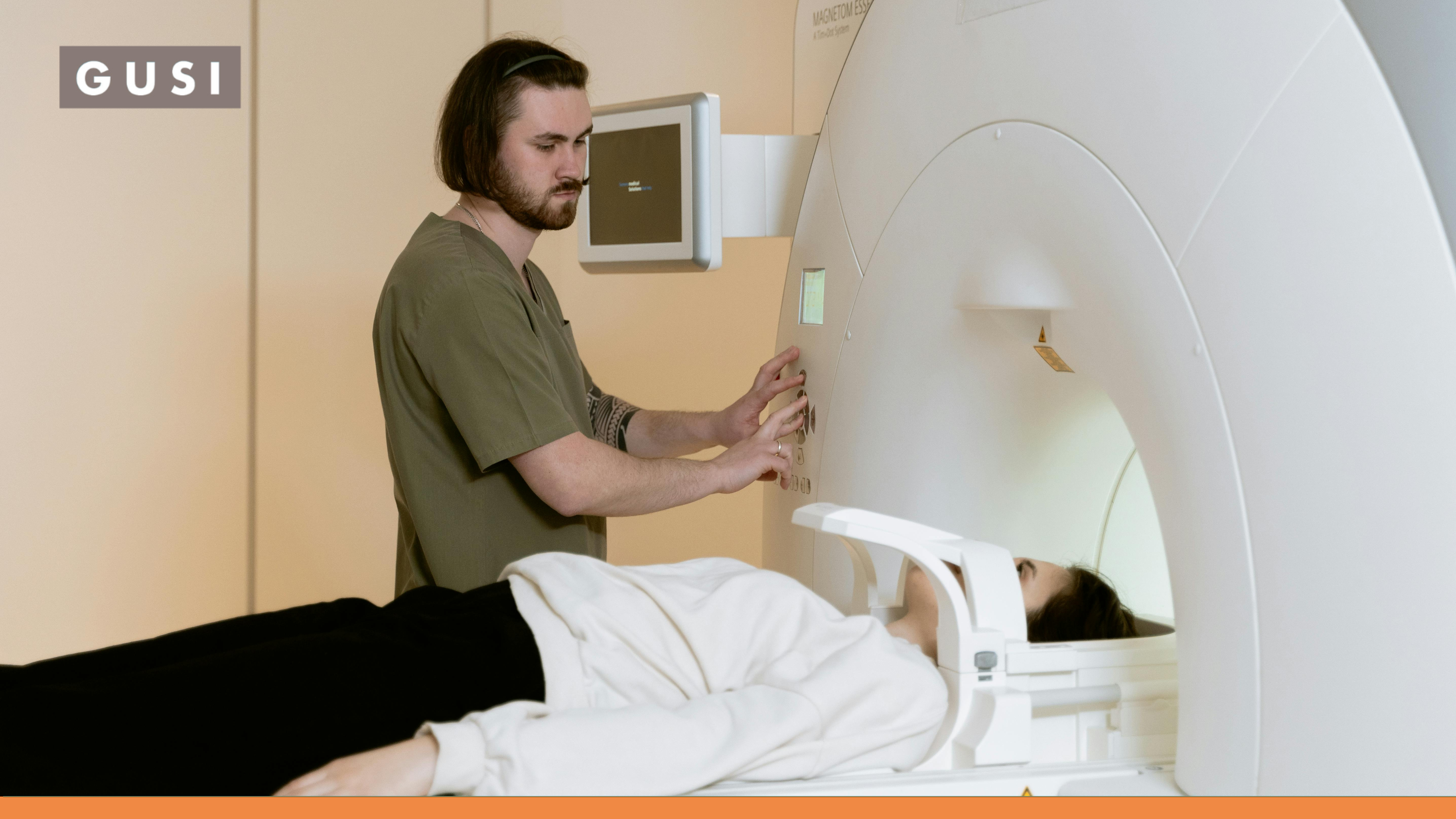In the Press, News and Information
POCUS Is the Future: Cutting CT Scan Risks While Putting Patients First GUSI Blog | April 2025

POCUS Leads the Way: Safer Care, Less CT Scan Risks
At Global Ultrasound Institute (GUSI), our mission has always been rooted in a simple yet powerful goal: empowering clinicians with the knowledge and hands-on skills they need to provide real-time, POCUS-informed, patient care — anytime, anywhere.
Providing patients with safe, reliable diagnostic answers is a universal need in healthcare. That’s why we are so deeply moved when research like the recent studies led by University of California, San Francisco (UCSF) invite the medical community to pause, reflect, and rethink how advanced imaging is used, particularly in the final chapter of life.
When Scans Don’t Help: The Case for Reassessing Imaging in End-of-Life Care
In San Francisco Chronicle’s recent coverage of a UCSF-led study, researchers highlight the growing concern over the overuse of CT scans in patients with advanced cancer. While CT is undeniably a powerful tool in modern medicine, the study underscores that in many late-stage cases, scans may offer little to no clinical benefit — and could even cause harm.
As Dr. Anand Narayan, senior author and UCSF radiologist, explains:
“There are patients who are experiencing symptoms like pain or shortness of breath, and imaging can help identify the cause. But for some patients, the scans don’t change management, and the results may lead to further invasive tests or false hope.”
This insight calls for a more thoughtful, patient-centered approach to imaging decisions, especially in end-of-life care, where comfort and dignity often take precedence over diagnosis.
The Hidden Cost of Radiation: Long-Term Risks of CT Imaging
In parallel, a groundbreaking study published in JAMA Internal Medicine estimates that 103,000 radiation-induced cancers could result from CT scans performed in 2023 alone — a figure that could represent 5% of all future cancer diagnoses in the U.S. The study places CT’s contribution to cancer risk on par with known hazards like alcohol consumption and excess body weight.
While the benefits of CT scans in trauma, cancer staging, and acute diagnostics are indisputable, these findings are a reminder: with great diagnostic power comes a responsibility to use it wisely. The cumulative effect of repeated scans — especially in patients with chronic illnesses or during prolonged hospitalizations — can pose lasting health consequences.

The Role of POCUS: A Patient-Centered, Radiation-Free Alternative
Both studies reflect an urgent need to rethink how and when we
image. At GUSI, we believe point-of-care ultrasound (POCUS) can help bridge this gap. POCUS offers real-time, bedside, radiation-free insights — enabling clinicians to answer focused clinical questions quickly and safely.
It’s important to note: POCUS is not a replacement for CT scans. Rather, it’s a powerful adjunct, particularly suited for scenarios where minimizing risk, improving patient comfort, and expediting care are top priorities. For example, POCUS is ideal for evaluating fluid status, guiding procedures, and rapidly assessing heart or lung function — all without exposing patients to ionizing radiation.
As emphasized in the Chronicle article:
“These findings underscore the need for clinical decision-making to prioritize patient-centered goals of care and reduce the use of imaging that is unlikely to influence management.”
Teaching a New Way of Seeing
Through our globally recognized, POCUS training programs, GUSI works to ensure that clinicians can see more, know more, and act sooner. By integrating POCUS into routine practice, healthcare providers can reduce unnecessary testing, enhance diagnostic confidence, and maintain a sharp focus on what matters most — the health and humanity of every patient.
Whether at a hospital bedside, a rural clinic, or a community health center, POCUS empowers healthcare workers to make imaging decisions that reflect both clinical necessity and deep compassion.
We’re grateful to the researchers and journalists who continue to spotlight these vital issues, and we remain committed to this shared mission: to build a future of healthcare where every test, every scan, and every decision is made not just with precision, but with purpose.
Because when we teach ultrasound, we’re not just teaching a technique. We’re teaching a way of seeing.
Sources:
